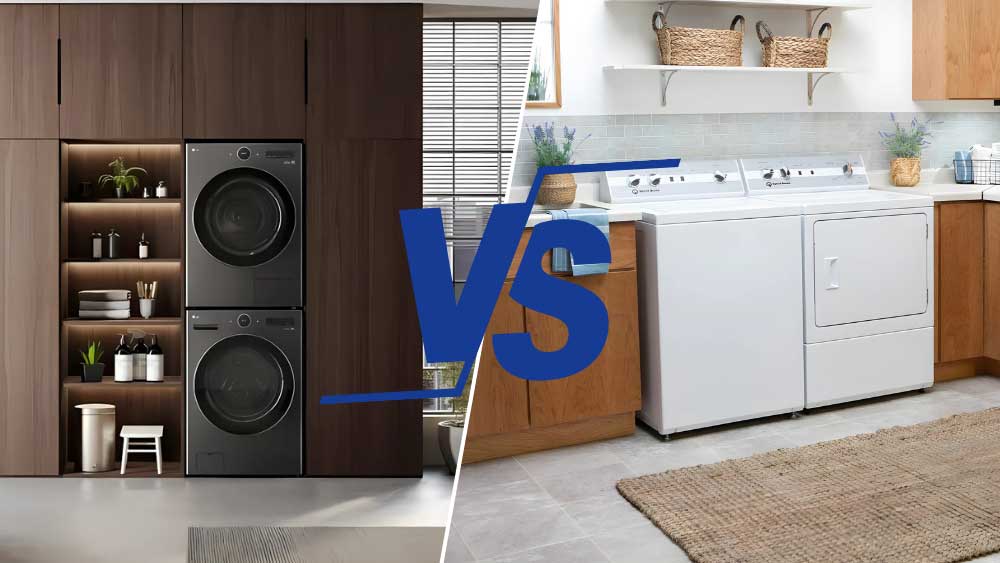Buying a new washer shouldn’t feel like a gamble.
But with so many styles, features, and opinions (especially when comparing front-load vs. top-load), it often does.
Front-load washers promise bigger capacity, faster spins, and lower utility bills.
Top-loads feel familiar, are easier to service, and don’t come with mold concerns.
And now hybrids (larger, more energy-efficient top-loads) are another viable consideration.
So what’s actually best for your home?
This guide gives you clear answers backed by over 33,000 real service calls logged by Yale last year.
Whether you're in Boston, my hometown of Needham, building on the Cape, or replacing a washer on Nantucket, we’ll help you pick with confidence.
Of course, there is no one type for everyone.
Here’s what you’ll learn:
- Real reliability stats from thousands of homes.
- Pros and cons of each washer type (including hybrids).
- The truth about mold, repair costs, and energy use.
- When price should and shouldn’t matter.
📌Skip Ahead:
Looking for answers about Washers?
Short on time? Download our free Washer Buying Guide.
How Do Front-Load, Top-Load, and Hybrid Washers Compare at a Glance?
⚡Quick Answer: Front-load = best performance/efficiency. Top-load = lowest hassle/cost. Hybrid = larger top-load with better efficiency, but cleaning varies by model.
Here’s how the three main washer types stack up on the features that matter most:
| |
Front-Load |
Top-Load |
Hybrid Top-Load |
| Capacity |
4.5–6.0 cu. ft. (largest loads) |
3.2–3.5 cu. ft. (smaller loads) |
4.7–5.3 cu. ft. (mid-range capacity) |
| Spin Speed |
1,160–1,300 RPM (faster drying) |
~700 RPM (longer drying time) |
~850 RPM (better, not best) |
| Water Use |
10–14 gallons per load |
Up to 40 gallons (70 w/ deep fill) |
Around 17 gallons |
| Energy Use |
~159 kWh/year |
~348 kWh/year |
~212 kWh/year |
| Mold Risk |
Higher (needs regular cleaning) |
None |
Low (still needs some care) |
| Ease of Repair |
Harder, costlier (sealed tubs) |
Simple and fast (basic parts) |
Moderate (impeller design, electronics) |
| Average Price |
$649–$1,099 |
$498–$1,099 |
$799–$1,099 |
Quick Takeaway:
- Front-loads win on efficiency, capacity, and gentler fabric care
- Top-loads win on simplicity, cost, and easy maintenance
- Hybrids offer a middle ground, but cleaning performance varies
Which Washer Type Is More Reliable in 2025?
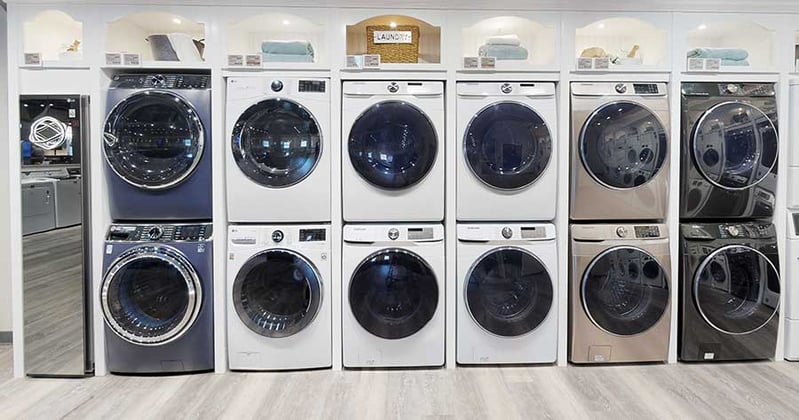
⚡Quick Answer: Both styles are reliable and close. The gap between front- and top-load service rates is small; LG top-load is our most reliable segment in the data—don’t pick on reliability alone.
At Yale, we measure reliability by a simple formula:
Service Rate = Number of Units Serviced ÷ Number of Units Sold
In 2024 alone, we logged over 33,000 real service calls across Greater Boston, Cape Cod, South Shore, Metrowest, and Southern New Hampshire.
This isn’t manufacturer marketing. It’s what actually breaks, and how often.
Front-Load Washer Reliability for 2025
The following service rates are based on a minimum of 100 products sold and a total sample of over 3,000 products within 12 months.
| |
Service Rates |
| GE Profile |
3.2% |
| Samsung |
3.4% |
| LG |
3.6% |
| GE Appliances |
6.9% |
| Grand Total |
4.5% |
Top-Load Washer Reliability for 2025
The following service rates are based on a minimum of 50 products sold and a total sample of over 700 products within 12 months.
| |
Service Rates |
| LG |
3.2% |
| Speed Queen |
3.6% |
| GE |
7.0% |
| GE Profile |
8.5% |
| Grand Total |
5.5% |
What This Means:
- Both styles are more reliable than the 9.5% average service rate across all appliances
- The 1% gap between front- and top-loaders isn’t significant enough to base your decision on
- Top-load LG washers are statistically the most reliable washers we sell
🔍Read more: The Most Reliable Washers
What Are the Pros and Cons of Front-Load Washers?
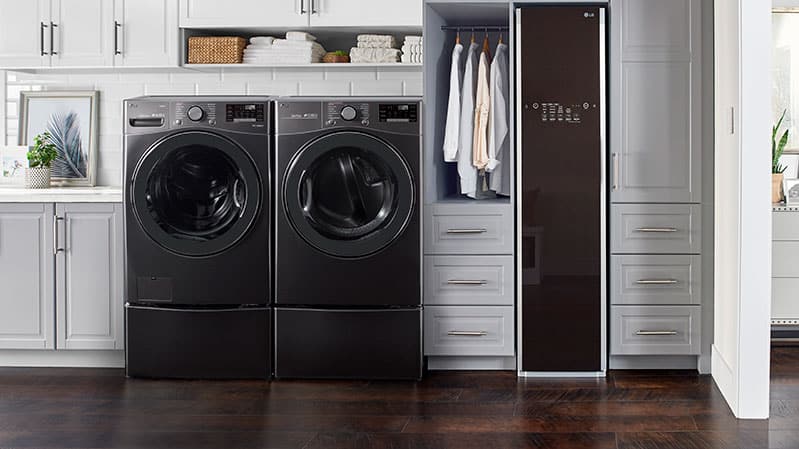
⚡Quick Answer: Best for large loads, fabric care, and the lowest utility bills. Watch for mold prevention habits and higher repair complexity/cost compared to top-loads.
Pros
✔️ Larger usable capacity (4.5–6.0 cu. ft.)
✔️ Faster spin speeds for shorter drying times
✔️ Gentler on clothes (no agitator)
✔️ Major water and energy savings
✔️ Front-loads are bigger and use less water and electricity. Our electricity and water rates are second to California’s, by the way.
Cons
❌ Can develop mold or odor
❌ Costlier to repair
❌ Heavier and harder to move
❌ Higher upfront cost
❌ You usually need to stoop unless you add pedestals to raise the machines (recommended).
I leave the door open and wipe down the gasket. No mold issues so far.
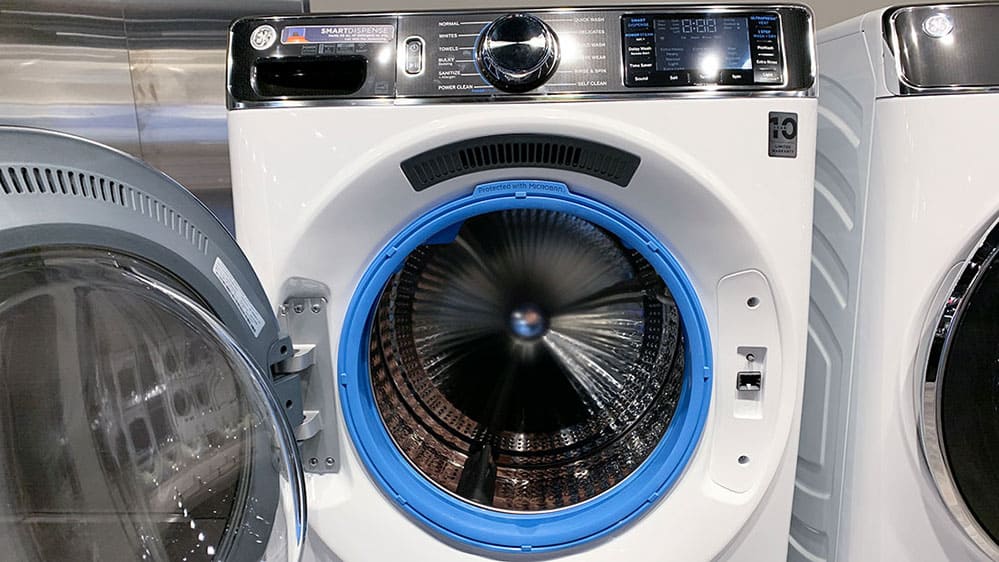
I owned a front-load for 20 years, except when I moved to an apartment three years ago.
The downside is repair. It is harder and more expensive, and we replace the machine under warranty, or under our extended plan, for a motor repair.
🔍Read more: The Best-Front Load Washers
What Are the Pros and Cons of Top-Load Washers?
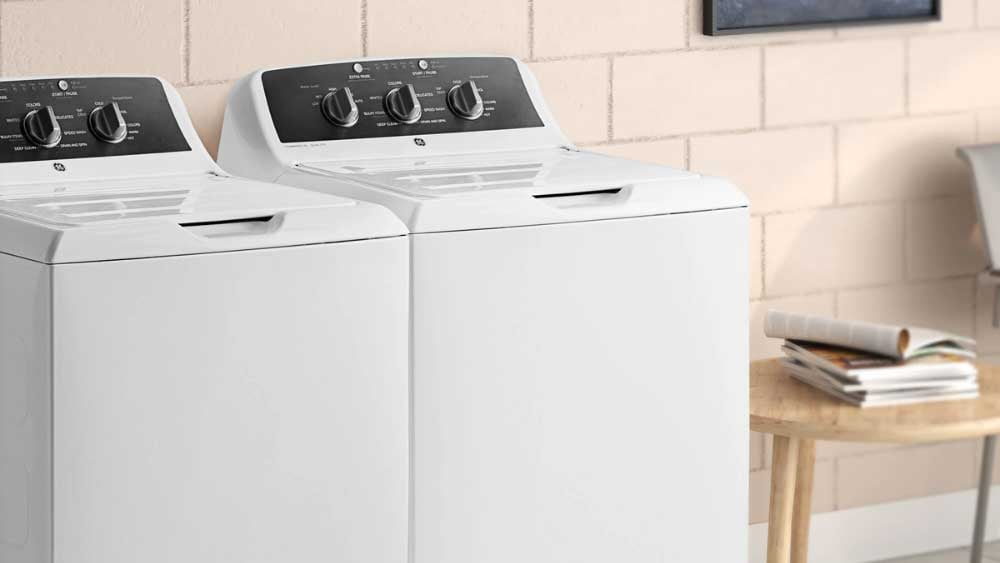
⚡Quick Answer: Simple and low-maintenance with fewer odor issues—but less capacity and slower spins, more water/detergent use, and harsher on clothes (higher operating costs).
Why people choose them: simplicity, ease of use, and low-maintenance reliability.
Pros
✔️ Simple, familiar design
✔️ No mold or odor issues
✔️ Easier and cheaper to repair
✔️ Great for aging-in-place setups
Cons
❌ Smaller usable capacity
❌ Slower spin speeds
❌ Higher water and detergent use
❌ Harsher on clothes
This is why many customers stick with top-loaders: less to worry about.
I had an older Kenmore in Jamaica Plain, and I had to untangle sheets after nearly every wash.
You bend down less with a top-load. They are cheaper to buy, but more expensive to operate.
Speed Queen’s main feature is aggressive agitation and 70 gallons of water to wash heavily soiled clothes; you lose capacity and energy efficiency as well.
🔍Read more: The Best Top-Load Washers
What Are the Pros and Cons of Hybrid Top-Load Washers?
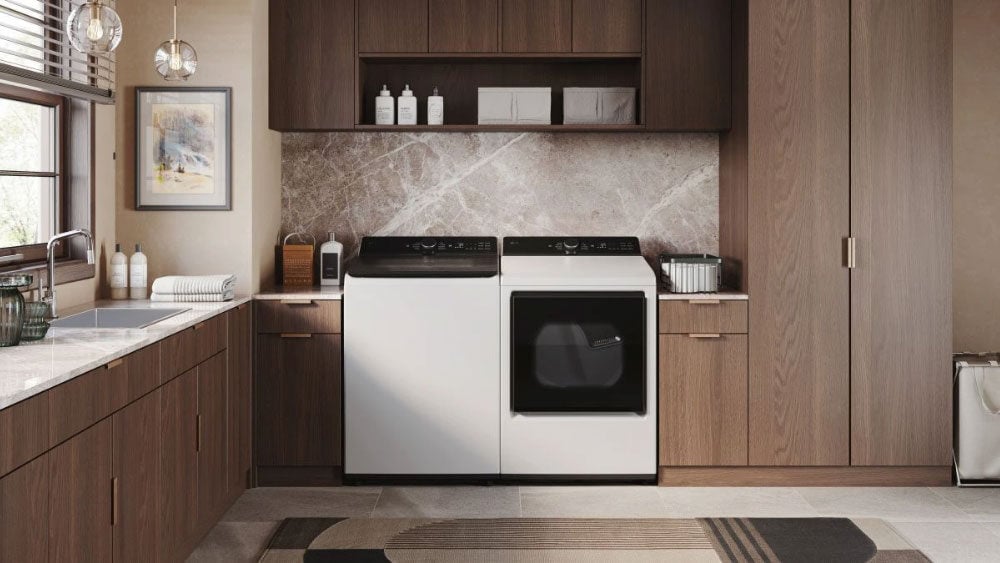
⚡Quick Answer: Bigger capacity and better efficiency with modern features, but cleaning can be inconsistent, usable space is often overstated, and they still trail front-loaders. Skip impeller-only hybrids and favor GE/LG agitator models.
Hybrids are a newer option designed to blend top-load convenience with front-load efficiency, but they aren’t perfect for everyone.
Why people consider them: a top-load style with more space and better efficiency.
Pros
✔️ Larger capacity (4.7–5.3 cu. ft.)
✔️ Improved water and energy use
✔️ Modern features (auto dispensers, smart controls)
GE includes an anti-tangle cycle that prevents sheets from knotting, which is a game changer.
Cons
❌ Cleaning performance varies by model
❌ Usable space isn’t always what’s advertised
❌ Still not as efficient as front-loaders
Hybrids without agitators are the one washer I do not recommend. You are removing the agitator from a design built to use one.

The larger hybrids from GE and LG with agitators are worth considering.
You get features, capacity, and efficiency similar to a front-load, with the easier access of a top-load.
What If Standard Washers Won’t Fit?
⚡Quick Answer: Compact Miele excels on build, spin (up to 1,600 RPM), and fabric care with ventless heat-pump drying; combos add placement flexibility but require filter care and longer cycles; LG WashTower gives stacked performance with center-mounted controls.
Not every home or laundry room fits the standard washer setup.
Here are specialized options worth considering if you’re short on space, need ventless drying, or want everything in one unit.
Miele Compact Washers
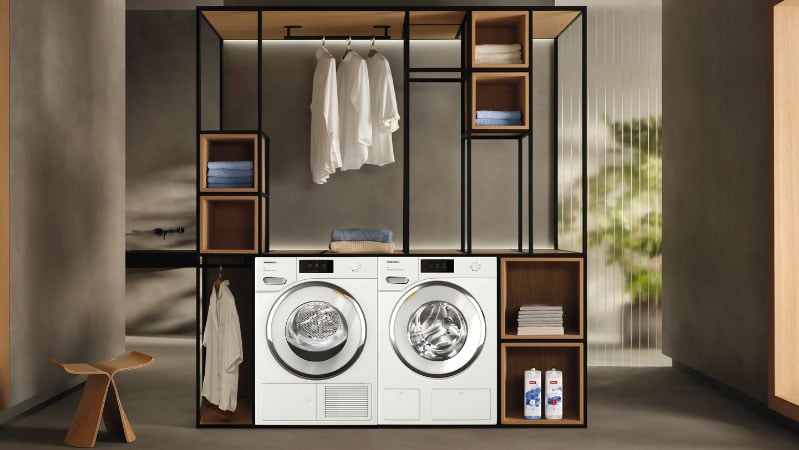
- Premium build and German engineering
- TwinDos auto detergent system
- Spin speeds up to 1,600 RPM
Miele is the most sophisticated appliance we sell. It also has a low repair rate and a long feature list, including a 1,600 RPM spin that almost dries clothes.
Their honeycomb drum can wash silks and other delicate items. Their dryers are 110-volt, ventless heat-pump models that dry efficiently thanks to mineral sensors.
🔍Read more: The Best Compact Washers and Dryers
LG WashCombo
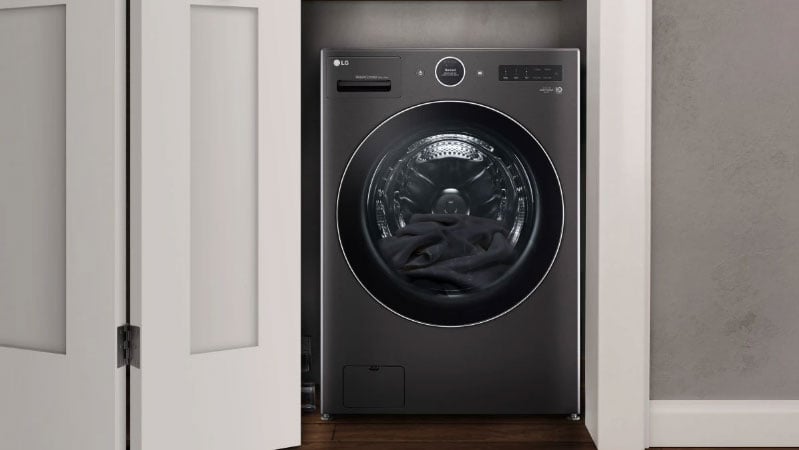
- Washes and dries in one machine
- Energy-efficient heat-pump drying
GE Profile UltraFast Combo
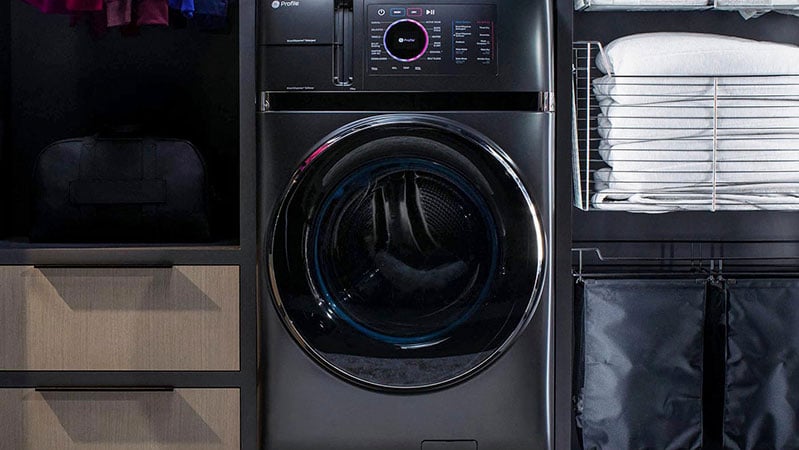
- Fastest cycles in the category
- Built-in intelligence and smart diagnostics
We dedicate articles and videos to combo washers and dryers. This new generation offers good size, strong features, and better filtration.
With 110-volt heat pumps, you can place these machines almost anywhere.
However, you must clean the filter or the machine can seize, and a cycle can take twice as long as with a separate washer and dryer.
🔍Read more: Are Combo Washers and Dryers Reliable?
LG Studio WashTower
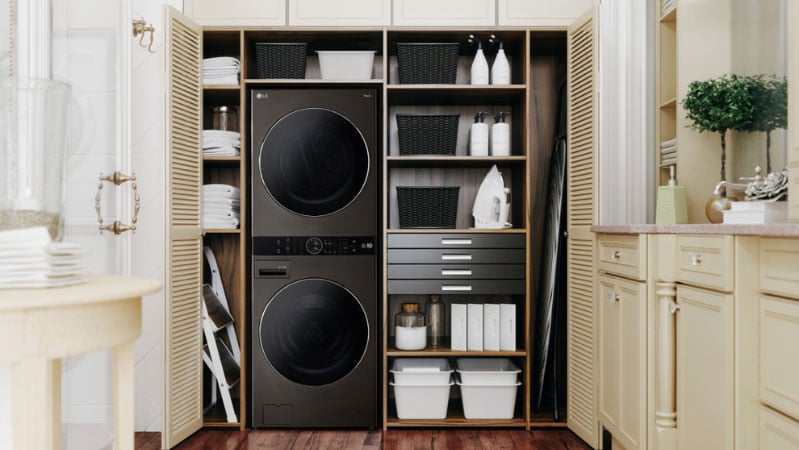
- Premium features and sleek design
- Center-mounted controls
LG's WashTowers are the only appliance my friends have ever asked about. Then again, there wasn’t much else to discuss during the pandemic.
With controls in the middle, everything is easy to reach when stacking.
👉 Need help figuring out if a compact, combo, or WashTower is right for you? Schedule a showroom visit or ask an expert online.
Verdict: Which Washer Should You Buy?
⚡Quick Answer: Pick a front-load for efficiency, capacity, and fabric care (if you’ll do light mold-prevention). Pick a top-load for simplicity, zero-mold worries, and easier repairs. Pick a hybrid for top-load access with bigger size/efficiency—choose agitator models.
When it comes down to it, both front-load and top-load washers are good choices. Your decision is about what’s right for you and how you use the machine.
Front-Load Washers: Best for
- Efficiency and lower utility costs
- Larger loads and bulky items
- Gentler fabric care
- Modern features and long-term savings
Top-Load Washers: Best for
- Simplicity and ease of use
- Fewer maintenance worries
- Faster, easier repairs
- Familiar layout and access
Bottom Line: If you want the most efficient, performance-driven wash and do not mind the occasional gasket wipe, a front-load washer is the better long-term value.
If you prefer a simpler experience, want to avoid any mold risk, or live in a home where fast service matters, a top-load washer may be the smarter choice.
The hybrid offers greater size and efficiency with easy top-load access.
Additional Resources
Get our free Washer & Dryer Buying Guide for features, specs, insider tips by brand, and clear explanations of every washer and dryer type. Over 1 million people have read a Yale Guide.
Related Articles:


